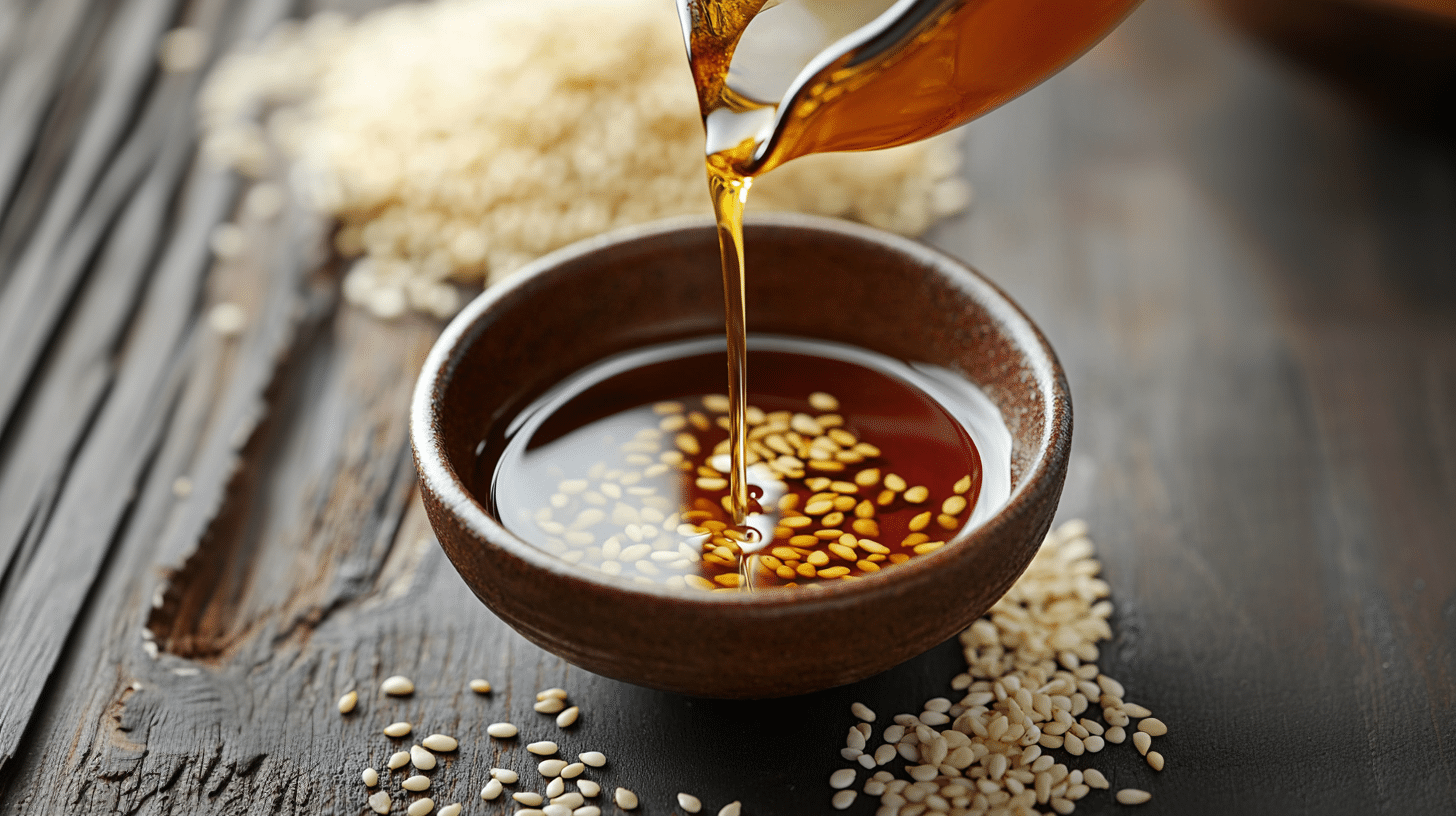sub sesame oil, particularly the toasted variety, boasts a rich, nutty flavor that enhances many Asian dishes. Its deep aroma and taste are derived from roasted sesame seeds, making it a staple in stir-fries, dressings, and marinades. The oil’s distinctiveness lies in its ability to impart a robust flavor even in small quantities.
Culinary Uses and Limitations
While sesame oil is versatile, it’s essential to note its limitations. Toasted sesame oil has a low smoke point, making it unsuitable for high-heat cooking methods like deep-frying. Instead, it’s best used as a finishing oil, added towards the end of cooking or in cold dishes to preserve its flavor.
Store-Bought Alternatives to Sesame Oil
Perilla Seed Oil
Perilla seed oil is a commendable sub sesame oil, especially in Korean cuisine. It offers a similar nutty flavor and aroma, making it suitable for dishes that traditionally use sesame oil. However, those with sesame allergies should exercise caution and consult with a healthcare professional before use.
Other Nut and Seed Oils
Several other oils can mimic the flavor profile of sesame oil:
- Roasted Peanut Oil: Provides a deep, nutty flavor, suitable for stir-fries and sauces.
- Walnut Oil: Offers a rich taste, ideal for dressings and cold dishes.
- Sunflower Oil: A neutral option, best when combined with toasted sesame seeds to emulate the desired flavor.
Read This Article: sub sesame oil
Homemade Sesame Oil Recipes
Making Toasted Sesame Oil at Home
Creating your own toasted sesame oil is straightforward:
- Ingredients: ¼ cup raw white hulled sesame seeds, 1 cup neutral oil (like grapeseed or avocado).
- Procedure:
- Toast sesame seeds over medium heat until golden brown.
- Combine toasted seeds with oil in a blender and purée until smooth.
- Strain the mixture using a cheesecloth to extract the oil.
- Store the oil in a sealed container in the refrigerator for up to several months.
Quick Sesame-Infused Oil
For a faster method:
- Ingredients: Toasted sesame seeds, neutral oil.
- Procedure:
- Heat the oil and add toasted sesame seeds.
- Let the mixture infuse over low heat for a few minutes.
- Remove from heat, cool, and strain.
- Store as above.
Tips for Using sub sesame oil
Flavor Matching
When selecting a sub sesame oil, consider the dish’s flavor profile:
- For Nutty Flavors: Roasted peanut or walnut oils are ideal for sub sesame oil.
- For Neutral Taste: Sunflower or canola oils work well, especially when combined with toasted sesame seeds.
Cooking Techniques
Given the low smoke point of toasted sesame oil, it’s best used as a finishing touch. If a recipe requires cooking at high temperatures, opt for oils with higher smoke points, like avocado or grapeseed oil, and add the sesame flavor towards the end for better sub sesame oil.
FAQs
What can I use as a sub sesame oil?
Roasted peanut oil, walnut oil, and perilla seed oil are excellent substitutes, offering similar nutty flavors. For a neutral taste, sunflower or canola oils are suitable.
Are there sub sesame oil for those with allergies?
Yes, sunflower and canola oils are safe sub sesame oil. However, always consult with a healthcare professional before introducing new ingredients.
How do I make sesame seed oil at home?
Toast sesame seeds until golden, blend with a neutral oil, strain, and store in a sealed container in the refrigerator.
How is toasted sesame oil made?
Toasted sesame oil is produced by pressing roasted sesame seeds, resulting in a darker oil with a pronounced nutty flavor.
Conclusion
While sesame oil imparts a unique flavor to dishes, several sub sesame oil can replicate its essence. Whether opting for store-bought substitutes or crafting your own at home, these options ensure your culinary creations remain flavorful and authentic.
Ressources:
1- healthline: 9 of the Best Replacements for Sesame Oil
2- bhg.com.au: 8 sesame oil alternatives
